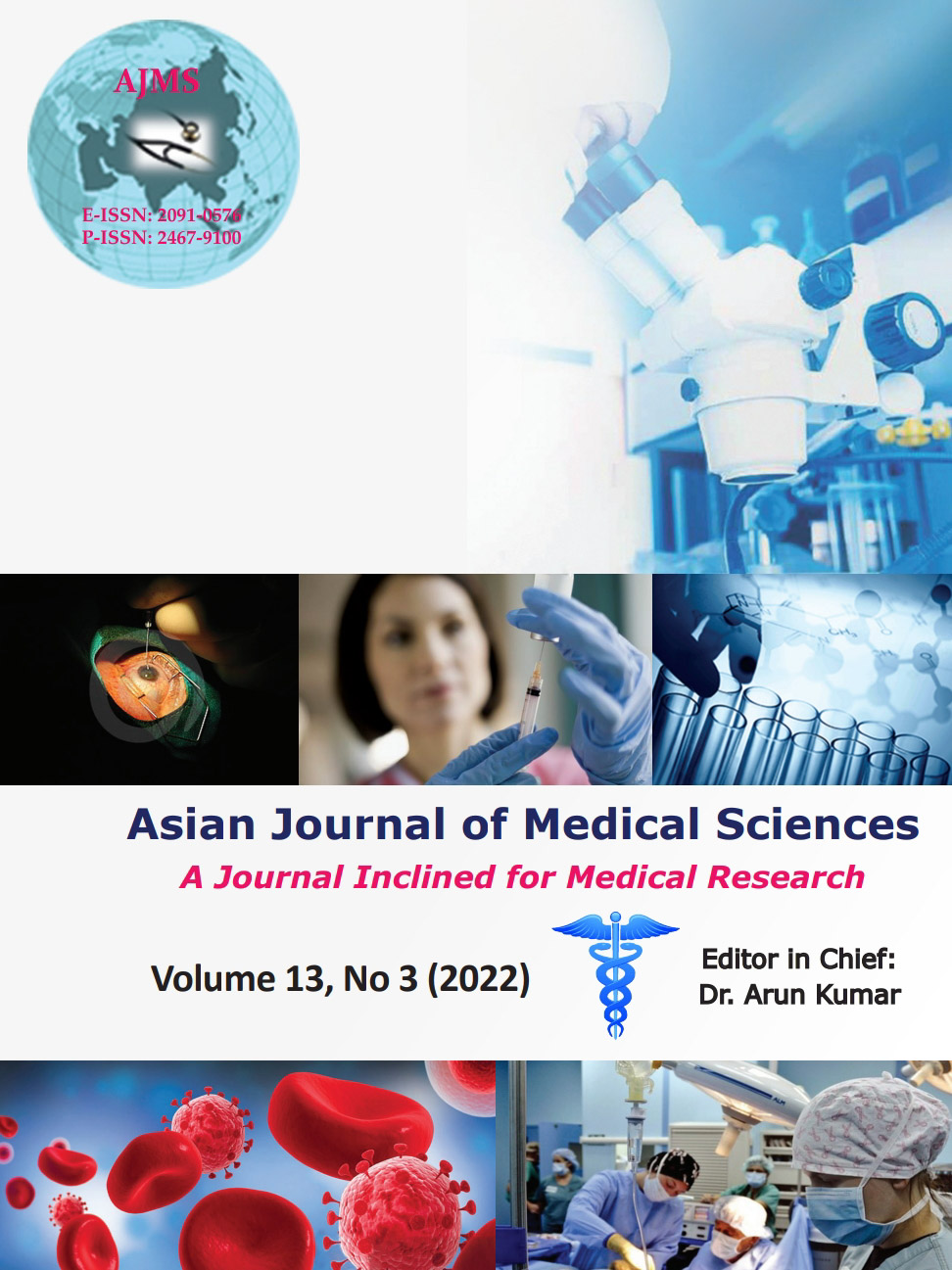Testicular biopsies in infertility and correlation with clinical and laboratory features
Keywords:
Assisted reproductive techniques, Follicle-stimulating hormone, Histopathology of the testis, Testicular biopsyAbstract
Background: With advances in assisted reproductive techniques management of infertility is changing at a very fast pace. Although minimally invasive techniques such as testicular sperm aspiration and micro-dissection testicular sperm extraction (microTESE) are gaining increased acceptance due to their minimally invasive nature the importance of testicular biopsy can not be overemphasized. Testicular biopsy provides a more accurate picture of testicular pathology and helps in identifying conditions such as hypospermatogenesis, which may not be evident on microTESE.
Aims and Objectives: The aim of the study was to study the histopathology of testicular tissue in infertile males and to correlate the histopathologic findings with clinical features and relevant laboratory findings.
Materials and Methods: Seventy patients with male infertility who had undergone testicular biopsies were included in this study on the basis of a predefined inclusion and exclusion criteria. The study was conducted in the department of general pathology, Christian medical college Vellore. Demographic details and history were recorded in all patients. Hormonal profile, Histopathological analysis was done in all the cases. Chromosomal analysis and Y chromosomal microdeletion studies were done in selected cases.
Results: Among the 70 patients evaluated, semen analysis revealed azoospermia in all but four cases. The most commonly affected age group was found to be between 31 and 35 years (44.29%). The mean age of the patients was found to be 33.71±5.56 years. Only 37.14% of our patients had normal testicular volumes and 66 (94.29%) patients had azoospermia. The majority of the patients (64.29 %) had high FSH values (>11 mIU/ml). On histopathological examination, the basement membrane was thickened (more than 0.40 microns) in 26 cases (37.14 %). On analysis of seminiferous tubules, maturation arrest was the most common abnormality (40%) followed by Sertoli cells only (30%) and hypospermatogenesis (15.71%). Maturation arrest was most commonly seen at the stage of primary spermatocyte (22.86%). Karyotyping was done only in 24 selected cases. Out of 24 patients, 23 patients had normal chromosomal numbers (95.83%) whereas one patient had a missing Y chromosome (4.17%). Y chromosome microdeletion studies showed abnormalities in three patients consisting of AZFa,b,c in two patients (8.33%) and AZFb deletion in 1 (4.77%) patient.
Conclusion: Testicular biopsy is an important investigation in patients with male factor infertility. It not only does help in accurate diagnosis but also can help in sperm extraction for usage in in vitro fertilization and intracytoplasmic sperm injection.
Downloads
Downloads
Published
How to Cite
Issue
Section
License
Copyright (c) 2022 Asian Journal of Medical Sciences

This work is licensed under a Creative Commons Attribution-NonCommercial 4.0 International License.
Authors who publish with this journal agree to the following terms:
- The journal holds copyright and publishes the work under a Creative Commons CC-BY-NC license that permits use, distribution and reprduction in any medium, provided the original work is properly cited and is not used for commercial purposes. The journal should be recognised as the original publisher of this work.
- Authors are able to enter into separate, additional contractual arrangements for the non-exclusive distribution of the journal's published version of the work (e.g., post it to an institutional repository or publish it in a book), with an acknowledgement of its initial publication in this journal.
- Authors are permitted and encouraged to post their work online (e.g., in institutional repositories or on their website) prior to and during the submission process, as it can lead to productive exchanges, as well as earlier and greater citation of published work (See The Effect of Open Access).




